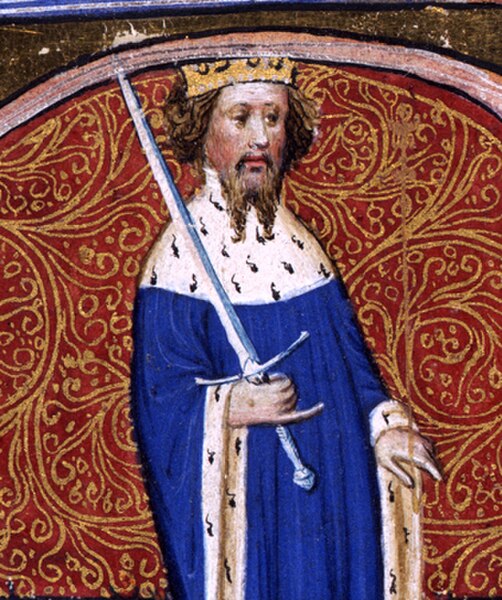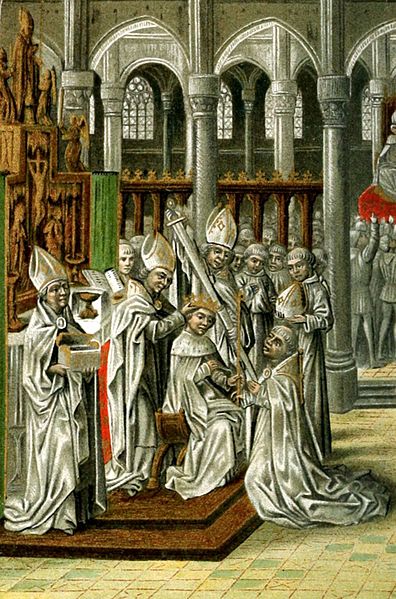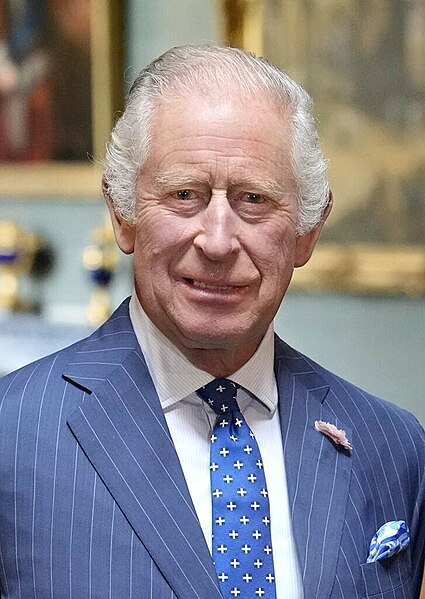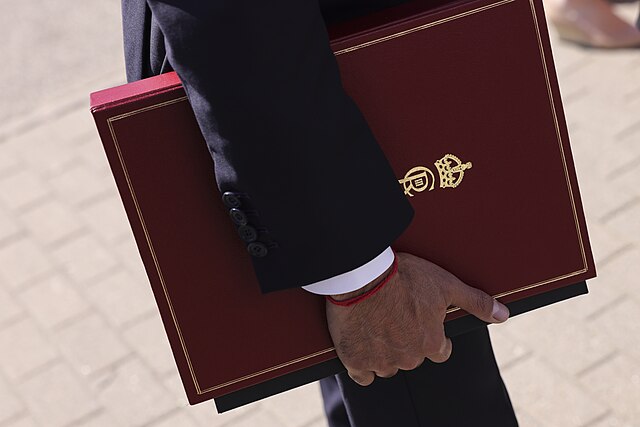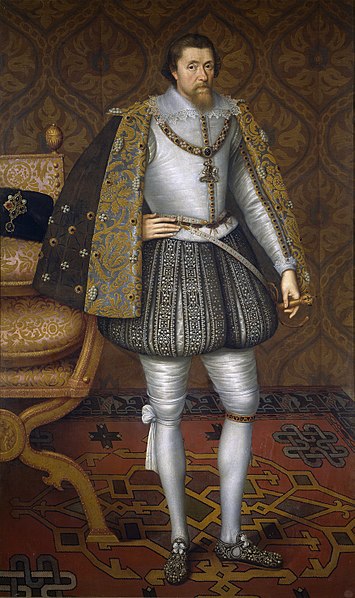Henry IV, also known as Henry Bolingbroke, was King of England from 1399 to 1413. Henry was the son of John of Gaunt, Duke of Lancaster, himself the son of Edward III.
Illuminated miniature, c. 1402
Henry of Bolingbroke, flanked by the lords spiritual and temporal, claims the throne in 1399. From a contemporary manuscript, British Library, Harleian Collection
The coronation of Henry IV of England, from a 15th-century manuscript of Jean Froissart's Chronicles
Silver half-groat of Henry IV, York Museums Trust
Monarchy of the United Kingdom
The monarchy of the United Kingdom, commonly referred to as the British monarchy, is the form of government used by the United Kingdom by which a hereditary monarch reigns as the head of state, with their powers regulated by the British Constitution. The term may also refer to the role of the royal family within the UK's broader political structure. The current monarch is King Charles III, who ascended the throne on 8 September 2022, upon the death of his mother, Queen Elizabeth II.
Monarchy of the United Kingdom
Ministerial folder with the monarch's emblem
The English Bill of Rights of 1689 curtailed the sovereign's governmental power.
In 1603 James VI and I became the first monarch to rule over England, Scotland, and Ireland together.

